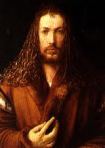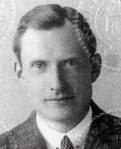Every four years, the globe celebrates the boundaries that divide it into countries by uniting as one spirit to glorify the collective we call the human race. It is a marvelous and captivating time which has most of us spectators glued to some form of medium to share this message of unity.
To be honest, it is all about triumph: where winning is the measurement of device: the fastest are measured in milliseconds; perfection is measured by decimal points; the strongest are measured in milligrams; distance is measured by millimeters; and, splash is measured in milliliters.
Victory is determined in fractions. Execution is calculated in years.
These athletes spend their entire lives preparing for the game, the routine, the race, the lift, the shot, the dive. Every waking moment, whether physically, psychologically, or mentally they are preparing, practicing, pondering, dreaming, imagining that they are standing on the top of the podium in the throne of the gods.
It is hard not to be caught up in their dominion. Even as a spectator we feel a part of their achievement.
Olympian moments in art are no different, although most certainly, not the same.
Years upon years might be dedicated to a cycle, a suite, a series and even the documentation or catalogue raisonne to an artist’s particular oeuvre.
March Chagall dedicated a total of twenty five years working on the one hundred five etchings of the Bible Series. Although his dedication was at times intermittent, a quarter of a century was dedicated to the Bible, which Chagall felt was, “the finest piece of poetry every written“.
In fact, Meyer Schapiro, the great art historian said, “If we had nothing of Chagall but his Bible, he would be for us a great modern artist.”
Pablo Picasso, as an octogenarian, completed the three hundred forty seven etching of the 347 Series in a mere seven months. From March 16th to October 5th of 1968, just five years before his death, Picasso displayed his technical grasp in the medium of etching by averaging almost thirteen etchings per week!
The great Dutch artist, Rembrandt, took almost seven years to complete his (greatest) drypoint etching, Christ Healing the Sick also known as The Hundred Guilder, which he completed in 1649.
Christopher White, who wrote a consummate two volume catalogue raisonne on Rembrandt, Rembrandt’s Etchings. An Illustrated Critical Catalogue said this etching was the “apotheosis of Rembrandt’s activity in etching…”
Albrecht Durer, the progenitor of graphic art in Western civilization started the sixteen woodcuts of the Apocalypse series during his first bachelor journey to Italy in 1494-5 and published them a mere three years later in 1498 (at the tender age of twenty seven).
Adam von Bartsch, curator of the Albertina in Vienna worked tirelessly until his death and spent his last eighteen years to complete his catalogue raisonne of the Italian and Northern school of engraver-painters in no less than twenty-one volumes.
Daniel Wildenstein spent over thirty years compiling his four volume opus of Claude Monet’s oeuvre of original work.
Christian and Yvonne Zervos began cataloguing Picasso’s unique work in 1932 and it was finished posthumously in 1970. The catalogue raisonne encompasses thirty-three volumes.
Frits Lugt is but another Olympian. He not only compiled a catalogue raisonne dedicated to collector’s stamps throughout history (1921) he also worked on a supplement to his original work which he published in 1956. In total, this man spent fifty-seven years of his life dedicated to researching collectors’ stamps throughout history.
The same heart and dedication is shared whether one is an athlete, artist or scholar; because, what they have is immeasurable. They all deserve to exist on the throne of the gods.
Art history is no different. It is full of Olympian moments.








